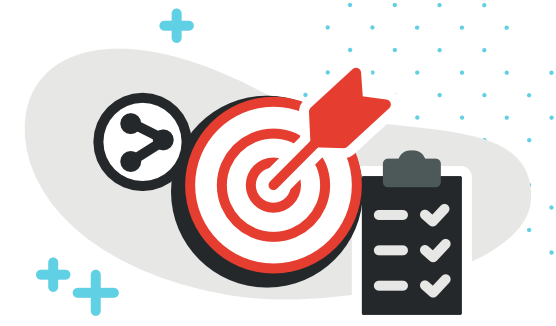A basic guide to starting social media for your small business
Table of Contents
Social media is the most popular activity for 65% of all UK internet users according to the Office of National Statistics. If you’re using social media everyday, you may already have an idea of how effective social media could be for your new business. You don’t have to be an expert, though. With the right strategy and a bit of planning, it can become a useful tool to find new customers and show them what your brand is all about.
This guide will run you through the basics of using social media for your small business, including:
- Choosing a platform
- Competitor research
- How to start gaining followers
How to decide which social media platform to use
Before you get started, have your target audience in mind. For example, if you’re a tradesman or a hairdresser, you’ll want to use platforms suited to engaging locals. If you are a software engineer or a writer, a platform to reach a wider network of people would be most useful to growing your customer base.

Facebook for your small business
Over 90 million small businesses use Facebook with the aim of attracting leads, raising brand awareness and gaining customers. When you create your page, you can set your location so people in your area can find you if they search for your service. You’re able to invite your friends to follow your page, and begin to reach their friends, and so on. This is all great if you’re looking to find more local customers.
If you want to drive users towards specific pages of your website or online store, you can easily add clickable links to your posts. And you can take advantage of the platform’s free features. For example, users can book appointments with you, and use the messenger tool to contact you directly.
Is Instagram the right platform for me?
This platform puts a lot of importance on visuals. So, if looks matter in your business – for instance if you’re a barbers or florist – Instagram is a strong choice. Add hashtags to your posts to reach people in your area, for example #BristolBarbers or #LiverpoolFlorist, to showcase your work to potential customers.
You can’t link to specific pages in Instagram posts, but you can add a link on to your profile (or ‘bio’) to your website.
Is Twitter the right platform for your business?
Twitter can be great for small businesses depending on how much time you have. It can be used to see what people are saying about your brand, or about your competitors. You can also seek out and engage with people who might be interested in your business, for example local foodies for your new cafe.
Twitter also works well if you want to promote specific products. You can add photos to posts with ease, and link directly to product pages. But if you want to share longer posts, be aware that each post has a 280-character limit.
LinkedIn: The basics
If you’re self-employed and offering a service, for example an IT consultant or a graphic designer, LinkedIn has incredible potential for finding new clients. It might even be the only network you use for your business.
Connect with people you know or have worked with, and then their connections enter your radar. You can start to find other professionals in your area or sector, and reach out to them to pitch your services. Also, build credibility by having past clients ‘recommend’ you for specific skills or tasks.
These are the four main platforms that you’ll be considering, but there are others out there if you have the time. TikTok has exploded in popularity in recent years, and might work if your business could translate well into short and impactful video posts. For example, two popular styles are ‘action’ or ‘before and after’ videos, so it could work for personal trainers, hairdressers or dog groomers.

If you sell clothes or art, a platform like Pinterest could be a winner as it’s entirely image led and allows you to tag items with ‘shopping pins’. If users like what they see, they can follow the pin straight to the buying page.
You might find a mix of the platforms is the way to go. But if social media isn’t your strongest point, it’s fine to start with just one. You can then add to it as you see fit.
Looking for a starting point? Check out your competitors
It’s worth taking some to find out what your competitors are doing on the platforms you’re interested in.
This is a great opportunity to see how other businesses like yours promote themselves and their products or services. Look at their posts, the pictures they use, and how they direct people to contact them or buy a product. Do the pictures and videos look like they were created professionally, or could you do it yourself?
Take note of what works and what doesn’t, and factor this into your own plans.
Get a feel for the tone they use, and how they respond to public comments. If you’re new to social media or just feel a bit anxious about using it as a business, this is the perfect way to gain some confidence. If similar small businesses are making it work, then you’ll be able to do it too.
Understand ‘content’ and make it work for you
In the social media world, growing your audience and building credibility for your small business relies largely on sharing regular, quality content. This is mainly referring to things like posts, images and videos.
Each piece of content will have a particular intention behind it. You might want to encourage someone to buy a specific product, share a brilliant piece of work you’ve done, or tell people about a service you provide.

Give yourself a good base to work from by developing a content strategy. Businesses of all sizes do this, as it helps you create a consistent identity that customers can relate to. And with a coherent plan in place, you’re less likely to post things spontaneously that could cause offence, present your brand in a bad way, or even put customers off.
It also helps you understand what you need to have ready by way of images, videos or product pages.
From your competitor analysis, you’ll have a rough idea of what kind of content is typical for businesses like yours, and what works well on your chosen platforms.
When it comes to creating your content, it all depends on your budget . The global brands we all know and love think nothing of hiring teams of professionals for their content. For small businesses, though, it’s more common to create it yourself.
You don’t need a war chest to grow your social media following. The most important thing is that you’re genuine in what you say and have the patience to build relationships, instead of making people feel like you only want to sell to them.
Creating your own content has become much easier thanks to the technology we carry around with us every day. The camera on your phone is likely to be good enough to take photos of your products. A chef can easily photograph their delicious creations for Instagram. Or a builder can quickly get some snaps throughout a job that are perfect for a slideshow-style ‘start to finish ’Facebook post. These platforms also have inbuilt editing tools, so you can crop pictures and make them look extra slick with filters.
Gain your social media following by being active
Small businesses are rewarded for being active. This means posting regularly on your social media profiles, and engaging with customers who have commented on your posts or sent a private message. When you’re starting a small business, you’ll have a lot going on. So the idea of constantly posting on social media, crafting the words and perfecting the images or videos, might seem unrealistic. But don’t worry, there are lots of free tools to make regular posting a piece of cake.
You can use software that allows you to schedule all your posts in advance, across several platforms. By just setting aside an hour or two, you can sort all your posts for the next month or so in one go.

However, customer engagement may require you to be a bit more reactive. Say you’re a chef and someone messages to ask what vegetarian options you have at your restaurant. They might be wondering where to go for dinner that evening, so if you ignore them, you might lose the customer. Meanwhile, if someone comments on a public post leaving a negative comment, you’ll want to be on it quickly so the customer is happy and other followers see that you’ve dealt with it.
There are some features that can help you manage this. Most platforms have notifications that tell you when someone has messaged or commented on a post. And on Facebook, for example, you can even set automatic responses to private messages that cover more generic questions.
If you use social media already, you might have seen ‘sponsored posts’ appear from time to time. These could be a good opportunity for you to reach new customers if you’re willing to commit a bit of money towards them. You can choose what audience you want to see a post, and be incredibly specific about it. This includes targeting only people in a certain small area, or people in your city who are interested in Japanese cuisine, for instance. The list is endless. Then it just depends on what budget you have to commit, which will impact how many people you reach.
Social media is a long-term game
No matter what shape your social media journey takes, just remember that it’s a marathon, not a sprint.
It’s different than, say, a musician or comedian who can go viral and gain a large following quickly. It’s totally normal for a small business to build a following over time, so don’t be disheartened by slow progress. Just stick with it, stay true to your customers, and it will be worth it in the end.
Countingup is the business account with free, inbuilt accounting software that’s designed for small business owners. Keep your expenses in shape and simplify your tax returns, so you can focus on doing what you love. Sign up today and get three months free.




